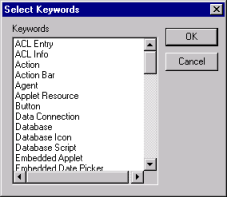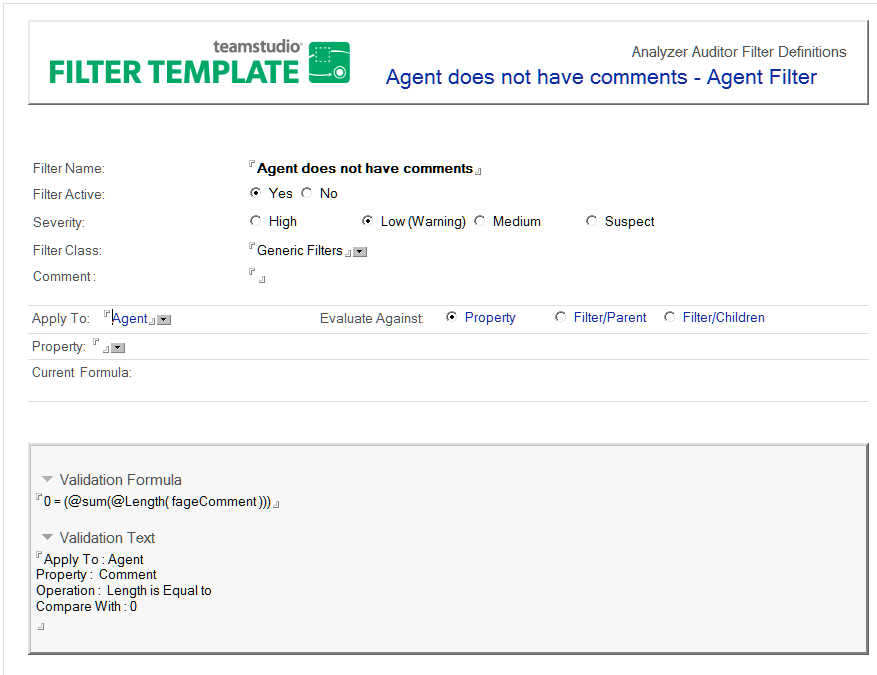Editing or Creating Filters
You can change the specifications of an existing filter or create a new filter.
To create a filter
- Open the Filter database (deanfltr.nsf).
- Click the Create Filter action button.
You see a New Filter document:

-
Define the new filter by creating the following fields:
The following table describes the buttons on the **Filter** form:Field> Description Filter Name The purpose of the filter, for example, agents using Java code. Filter Active Yes/No indicates whether the filter should be included when one of its classes is chosen for processing. Severity The relative importance of items matching this filter. Filter Class One or more groups (classes) to which the filter belongs. Comment The reason to use the filter, for example, Release A to Release B upgrade. Apply To Click the Apply To dropdown to select the design element you want the filter to check. This is the primary focus of the test. 
While selecting All lets you create filters that apply to all elements within a database design, selecting All Design Elements restricts your filter to first-level elements such as page, form or view. It ignores (doesn't include as audit targets) sub-elements such as field, hotspot, and column. With the Apply To field chosen, the form expands to show the Evaluate Against options, the Property field, and other filter options.Evaluate Against Select the Property option to include a property in the validation formula, or select an option to apply an existing filter against the Parent or the Children of the element in the Apply To field. Property Select the property you want to test. The list generated is based on the Apply To field type.
Once you select the property, the form shows options for defining a condition to use in the selection step. The condition options you see are based on the Apply To and Property fields selected.Condition> Select the appropriate operation to define your test. The operation choices depend on the Apply To and Property selections you made previously.
For example, select Button for the Apply To design element and Hide When Options for the property. To add a Condition, simply select one of the operations such as Has one of the following. Then select a Compare With value such as Web browsers. To test multiple conditions, you click AND or OR to specify the logical operator.
When you have selected the elements of a single condition, click the Add Condition button to have the Validation Formula updated to include the test just completed.Button Description Add Condition Appends the Validation Formula to include the test just defined. When more than one formula is specified, the Add Condition Logic radio button determines the boolean operator used to combine conditions:
– AND: all conditions must be true for the filter to match.
– OR: any condition causes a match.Replace Condition Deletes the entire Validation Formula. Use this button to effectively redefine the entire filter, starting with the same design element in the Apply To field. -
Add or Replace the condition as desired. The new condition formula is written to the Validation Formula field, and a description of the condition is added to the Validation Text field:

Save your changes as prompted when you close the document.
To edit a filter
- Open the Analyzer Filter database.
- Double-click an existing filter to open the document.
- Double-click the document to enter edit mode.

- Edit the fields you want. If your edits require a new validation formula, Auditor automatically generates it when you select a property and add or replace a condition.
- Use the Validation Text field to reverse engineer how a validation formula was created.
- Save your changes as prompted when you close the document.
Note
To develop a filter for a different design element, you must create an entirely new filter. To modify the Validation Formula, use the Add or Replace Condition functions to rebuild the formula.